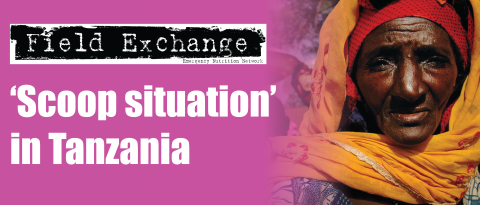Famine in North Korea: Markets, Aid and Reform
Summary of book review1
'Famine in North Korea: Markets, Aid, and Reform' is a newly published book2 with a foreword by Nobel prize winning economist, Amartya Sen. It provides a pithy analysis of the mass starvation that began in North Korea in the early 1990s leading to an estimated 600,000 - 1 million deaths out of a population of 22 million people. This is a summary of a book review appearing in a recent edition of the Lancet.

Anti-flooding operation in Congjin that was supported by WFP in Food for Work programme in 2004.
Although North Korea had suffered from bad weather, external shocks and low food production, the authors suggest that the cause of famine was primarily the collapse of entitlements, notably the ability of people to command food from the public food distribution system in an authoritarian state. According to the authors, locked into a landmass of which only about 20% can be cultivated, North Korea adopted a misguided strategy of food selfreliance. Chronic difficulties in agriculture and food spiralled into a full-blown crisis in 1995 with a series of set backs: withdrawal of aid from the then Union of Soviet Socialist Republics) (USSR), flooding and a succession of natural disasters, and geopolitical isolation resulting from the country's attempt to develop a nuclear arsenal.
However, it was neither the weather or shocks which caused the famine but rather state failure of denying people their food entitlement from a collapsed public food distribution system. Not all Koreans suffered equally. Hardest hit were the young and elderly, people in the north-eastern provinces and those from lower status occupational groups, such as farmers housekeepers and the jobless.
The authors place responsibility for the famine squarely with the North Korean government. They argue that the crisis was systemic, intimately related to the authoritarian structure of government, the absence of accountability to the citizenry, and the denial of political and civil liberties and property rights. "The government requested international food aid only in 1995, although food difficulties were evident as early as 1991". How much of the government's procrastination and ineptitude were due to malfeasance or lack of information is unclear, which the authors generously accept by considering a range of explanations for failure of the state. Such entitlement failures of socialist political systems are the source of some of the greatest 20th century famines: the USSR in 1921-22 and 1946-47; Ukraine in 1932-34; China in 1958- 62; Cambodia in 1976; and Ethiopia in 1984-85.
The international humanitarian aid community is not let off the hook either. Between 1995- 2005, North Korea received about $2.3 billion in foreign aid, two-thirds as food aid. Government insisted upon controlling food aid by restricting the number and movement of foreign staff, blocking agencies from developing independent channels for food delivery, and forcing them to accept assigned Korean translators. Data show that as donated food volumes increased, the government reduced its purchase of imported food. Aidgivers were forced to accept North Korean "exceptionalism", tight restrictions on their oversight, and supervision of donated food. Consequently, aid-givers worried over access to people in need, monitoring and tracking, and outright leakages. The authors estimate that about 30% of food aid was diverted, mostly to the county's elite, including the military.

North Korean workers packing fortified biscuits at factory in Sinuiju city, North Pyongan province supported by WFP and UNICEF in 2003.
The routing of food aid reflected, respectively, harder line versus softer line in pushing for North Korean cooperation in security negotiations. Aid-givers thus had mixed humanitarian and political motives, with the latter heightened during political negotiations over North Korea's ambition to develop nuclear armaments.
The authors are quick to point out that these difficulties do not mean that aid was without positive benefits. The ruthless behaviour of a self-preserving regime unresponsive to the needs of its citizens was balanced by the mixed motives and poor coordination of foreign aidgivers.
The collapse of the public distribution resulted in a bottoms-up marketisation of food, changing the basic economic pattern of food distribution in North Korea and opening up space to secure food beyond the public distribution system. An expanding food market in North Korea was an unintended consequence that the regime now treats with mixed signals of tolerance. Markets in food, if sustained and expanded, could become the seeds of major reforms of North Korea's economy that are essential for sustainable food security and famine prevention.
The final conclusion of the authors is that "we see no substitute for a policy of seeking to aid the North Korean people while engaging the government and encouraging its political, as well as economic, evolution."
1Chen. L and Lam. D (2007). A penetrating analysis of famine in North Korea. www.thelancet.com. Vol 370, Dec 8th, 2007, pp 1897-1898
2Haggard. S and Noland. M (2007): Famine in North Korea: Markets, Aid and Reform. Columbia University Press, 2007. Pp 368, US$35.00. ISBN o-231-14000-2
Imported from FEX website


